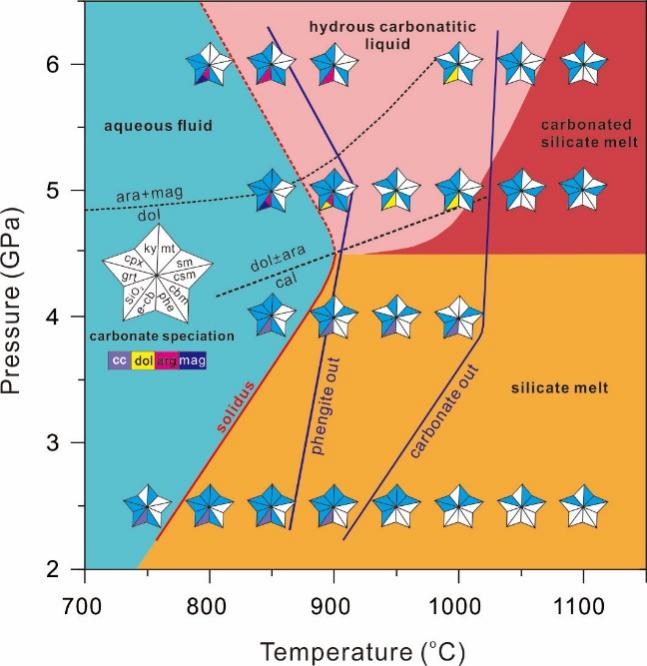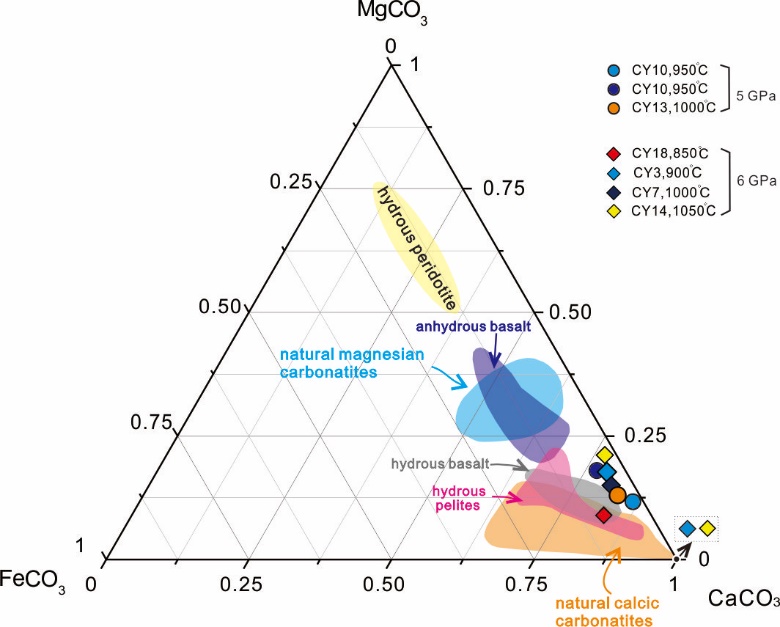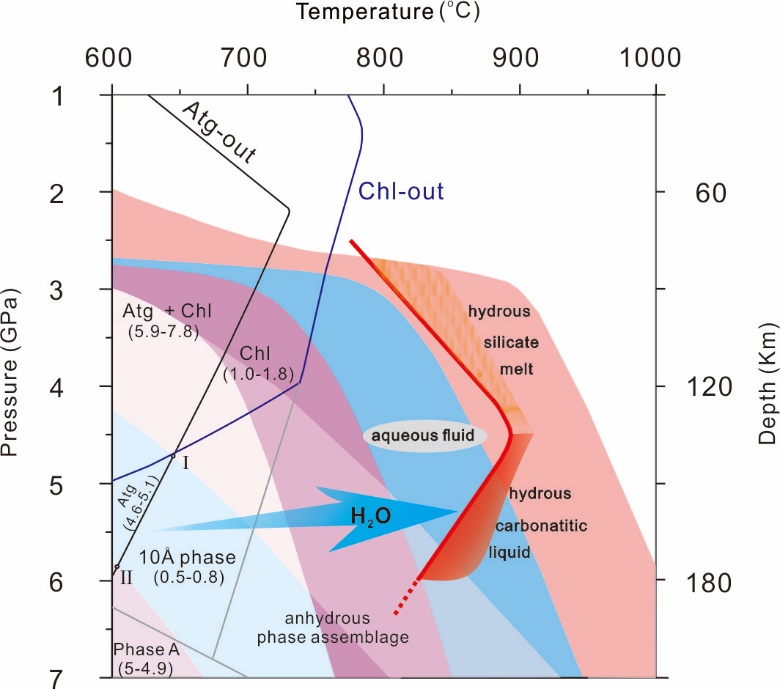Deep carbon cycle at subduction zones affects the long-term habitability of the surface of Earth by regulating atmospheric CO2 concentrations. However, how carbon is transferred from the slab to the subarc mantle remains unclear.
Recently, the research team led by Prof. ZHANG Guoliang from the Institute of Oceanology of the Chinese Academy of Sciences (IOCAS) found that hydrous carbonatitic liquids act as a pervasive agent to transfer carbon from the slab to the subarc mantle.
The study was published in Communications Earth & Environment on Mar. 15.
Researchers determined the phase relation of the subducting carbonated pelites using high-pressure high-temperature experiments. The results show that partial melting yields hydrous silicate melts at 2.5-4 GPa, whereas the liquids close to the solidus over 5-6 GPa are hydrous, calcic carbonatitic liquids, which are replaced by carbonated silicate melts at higher temperatures. In addition, the minimum temperatures required for the studied pelites to produce silicate melts increase with increasing pressure from 2.5 to ~4.5 GPa, however, they decrease by approximately 50-60 ℃ between 4.5 and 6 GPa as the initial liquids become essentially carbonatitic.
In the framework of the fluid-present solidus for carbonated pelites constrained by this study, previously constructed slab thermal structure and the stability field of serpentinized hydrous minerals, flux melting of carbonated pelites and formation of hydrous carbonatitic liquids were realized in the intermediate thermal regimes at depths of ~150-180 km.
"Carbonatitic liquid, as a medium for transferring carbon from the slab to the mantle at subarc depths, is not restricted to the hottest conditions or to be the hydrous melting of calcium-rich lithologies as previously thought", said Dr. CHEN Wei, first author of the study.
"This study provides a new insight into the mechanism for decarbonation of subducting slab, and would shed light on carbon cycle between the Earth's surface and deep interior," said Prof. ZHANG.
This work is financially supported by the Natural Science Foundation of China, etc.

Fig. 1 P-T diagram of the experimental results for the carbonated, hydrous pelites.

Fig. 2 Ternary siderite (FeCO3)-calcite (CaCO3)-magnesite (MgCO3) diagram for the quenched carbonate compositions.

Fig. 3 Nature of liquids released by the carbonated, hydrous pelites from this study, and the dehydration processes of serpentinized peridotites under different subduction geotherms.
Wei Chen, Guoliang Zhang, Shantanu Keshav & Yuan Li. (2023). Pervasive hydrous carbonatitic liquids mediate transfer of carbon from the slab to the subarc mantle. Communications earth & environment.
(Text by CHEN Wei & ZHANG Guoliang)
Media Contact:
ZHANG Yiyi
Institute of Oceanology
E-mail: zhangyiyi@qdio.ac.cn
(Editor: ZHANG Yiyi)

